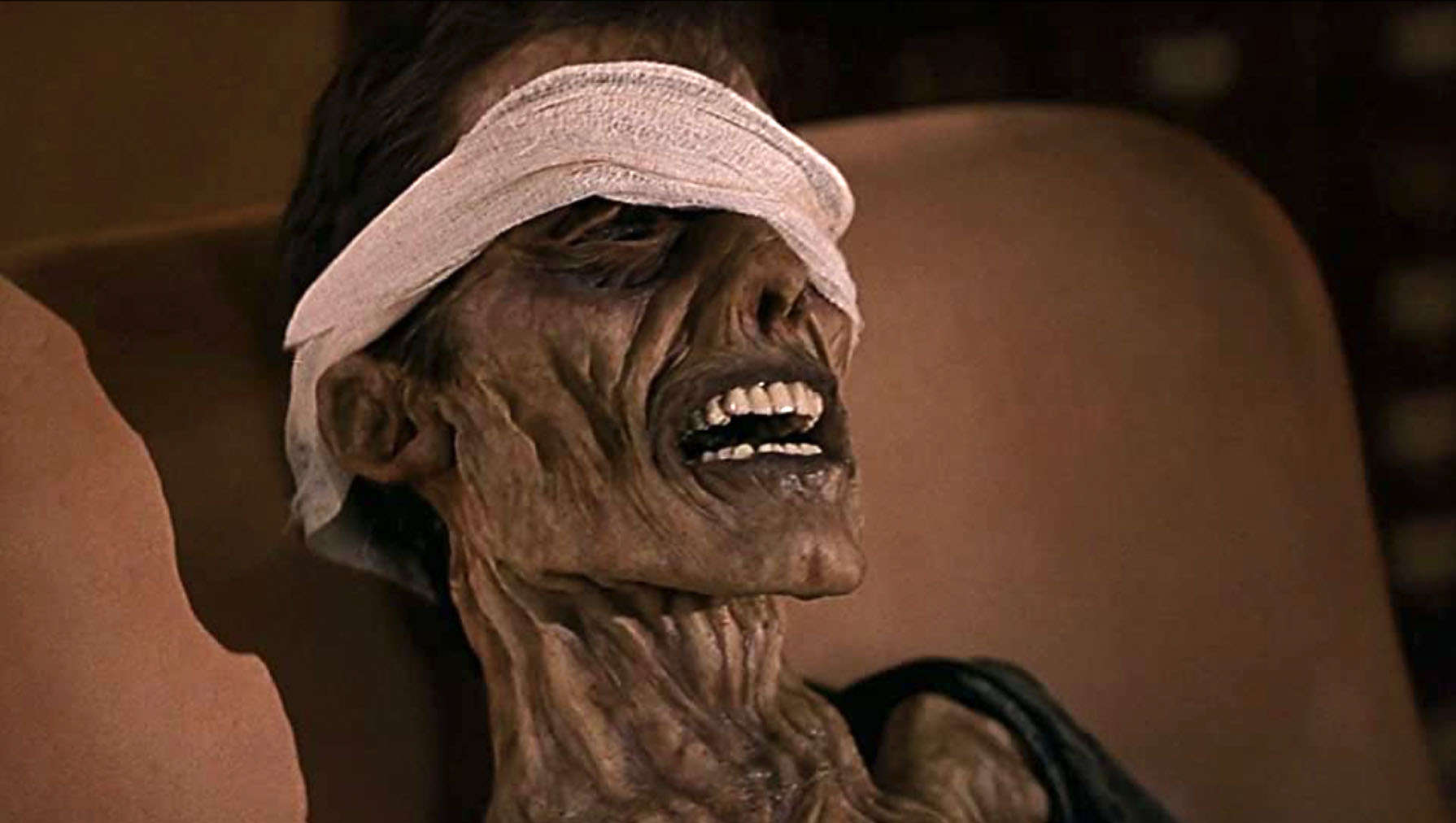Create a free profile to get unlimited access to exclusive videos, sweepstakes, and more!
How to unwrap a mummy without ever touching it

Mummification was supposed to be the dawn of a new life after death. After a body was embalmed and laid to rest in a tomb, the ancient Egyptians expected it to stay there for all eternity. That didn’t always happen.
Mummies are constantly surfacing from the sands of Egypt, but a new combination of tech is now able to virtually “unwrap” them and see what is under those wrappings without destroying anything. This is a level up from just X-rays (which have been used for years). Paired with CT scanning, X-ray diffraction tech has revealed the body of what scientists realized was a misunderstood mummy. In X-ray diffraction, rays narrower than a human hair pass through openings between the wrappings and illuminate what lies beneath. Using this method has revealed something they would have never imagined—the 1,900-year-old mummy was actually a 5-year-old girl.
“Once I knew about this particular mummy and its contents, I realized I had the tools to get 'fingerprints' of internal objects like the calcite inclusion (inclusion F). I also knew where I could get an x-ray beam that had a diameter smaller than a human hair AND where there would be enough space to move the mummy over 4 feet from side to side so that we could move the mummy so that the beam could peer into all portions of the mummy,” Stuart Stock, who led a study recently published in Journal of the Royal Society Interface, told SYFY WIRE.
HPM4 is a mummy from the Roman era that was excavated by famed Egyptologist Flinders Petrie sometime between 1910 and 1911 in Hawara, Egypt. Portrait mummies were common during this time. The portrait over the mummy’s face shows a hairstyle that dates it anywhere from 150 to 200 AD. This isn’t the first time HPM4 is being studied; radiography had previously determined that the skeleton was intact and complete, and also that it did not belong to an adult. Previous research also showed radiodense objects (which are too dense for X-ray waves to pass through) which were thought to be amulets. Magical amulets, written spells and shabti, or miniature models of servants that were supposed to cater to the deceased in the afterlife, were often tucked into mummy wrappings by the embalmers.
However, there were still mysteries between the wrappings. How old was this person at the time of death? What was the cause of death? Was the skeleton male or female? What were the radiodense objects between the wrappings? Stock already had an idea for the answer of one of thse questions.
"I believe that the child died of disease," he said. "Diarrhea from various causes would have killed large numbers of children (and still does). Other fatal diseases might also be responsible."
The mummy was first CT-scanned to create a 3D guide to the mummy. This is important for directing extremely thin X-rays into the right areas, but only running the X-ray diffraction process would show how effective the guide generated by those CT scans would be. How many small objects, such as amulets, would be identified by diffraction was also something that would only be revealed by this virtual “unwrapping”.
So what did the team observe that hadn't been seen in nearly two thousand years?
"The size of the mummy is quite small; the child would have been about 3 feet tall," Stock said. "Why the portrait is so different in age from the body is a matter of speculation. It could have been that the depiction was intended to convey what the child would have looked like had they lived to adulthood or to show familial resemblance. It could have also been a realistic human portrait, but not one especially linked to the child or to the child’s mother. Another possibility is that it could have been a realistic portrait of the girl’s mother with the portrait being painted early in the mummification process and displayed in the family home until the mummy was ready to go in the ground."
There was also a calcite scarab that had been placed in the abdominal incision of the mummy, a common practice since scarabs were thought to be symbols of rebirth. It was also expensive. This girl was also assumed to be from a wealthy family, though she was not a royal. You needed serious gold for mummification and an amulet like that.
Mummy unwrapping parties used to be a thing. During the Victorian era, party guests used to gather around a surgeon’s table, where they would watch the spectacle of linen being unwrapped until the desiccated body was exposed. Victorians were so into Egyptomania and macabre oddities that they had no problem watching someone unwrap a corpse that was thousands of years old. Nobody cared much about the ethical issues surrounding a body that had been prepared for a journey to the underworld and supposed to stay in its tomb for all eternity. Handling the bodies was not much of a concern, either, which is why so much scientific evidence has been forever lost. No wonder museums don't want to let their specimens go.
"The CT-guided diffraction studies of objects in mummies is not something that will be done frequently," said Stock. "Museums are quite reluctant (rightly so) in letting a mummy leave the premises.
CT scans and X-rays are non-invasive and also unlikely to inflict damage on delicate mummies and artifacts. There was no visible damage to HPM4 after diffraction mapping. Damage on the molecular level still remains a concern for future DNA extraction. If there were any adverse effects on the mummy's DNA, they still need to be determined, but it is unlikely any genes were affected because limited doses of X-rays were used to illuminate what was inside. Stock is hopeful about the future of this technology.
"I do believe the approach will be used in the future when CT data sets reveal something in a mummy’s interior, something that we really want to identify," he said. "Now that we know we can get good diffraction patterns and identify the 3D origin of these patterns, we can certainly obtain better information. If there were a buried metal amulet, for example, X-ray diffraction could tell us a lot about the fabrication process and perhaps even the likely original of the artifact."
Now that mummies can be examined with no risk of damage or disrespect to the dead, who knows how they will speak to us through modern technology.














